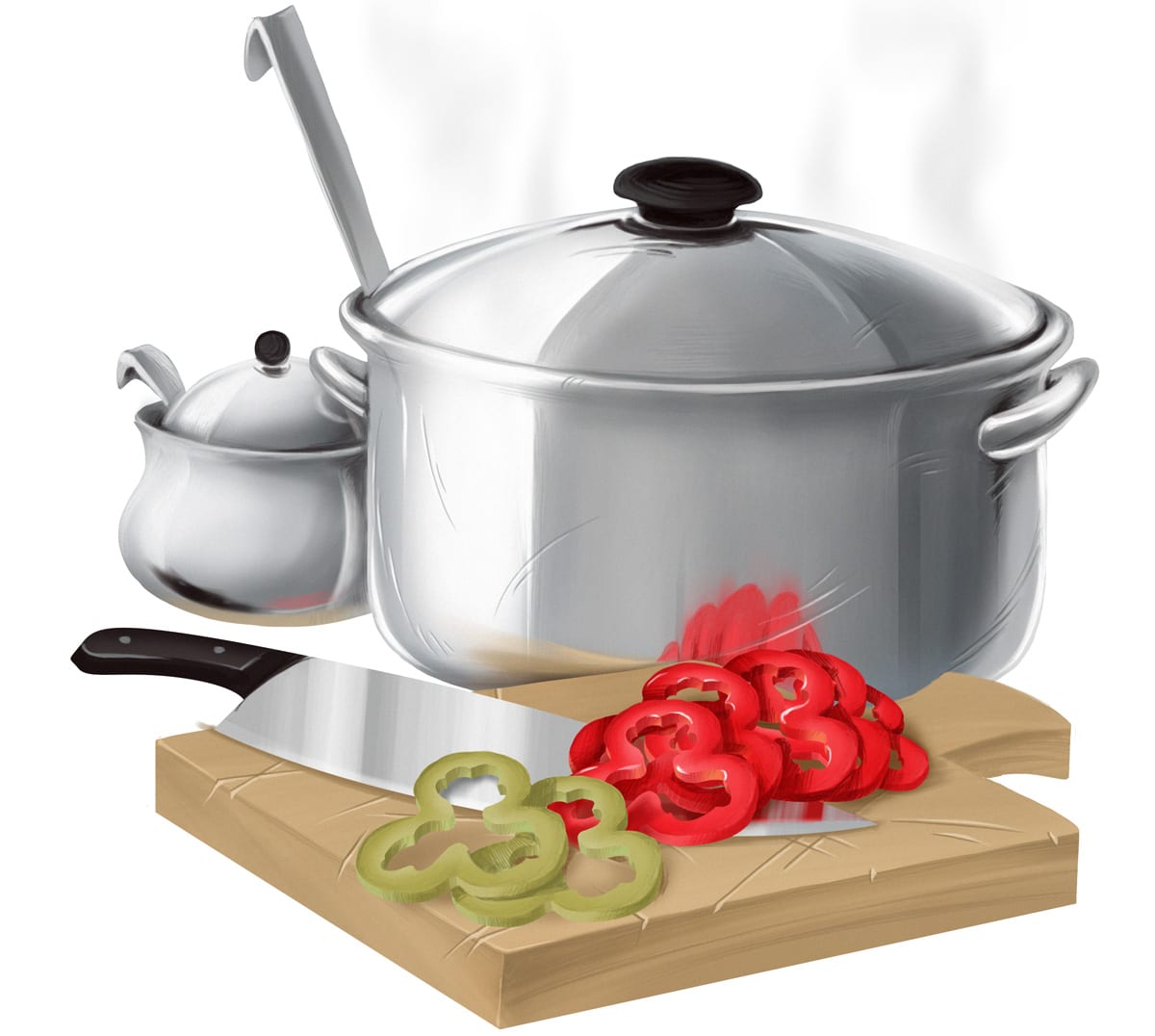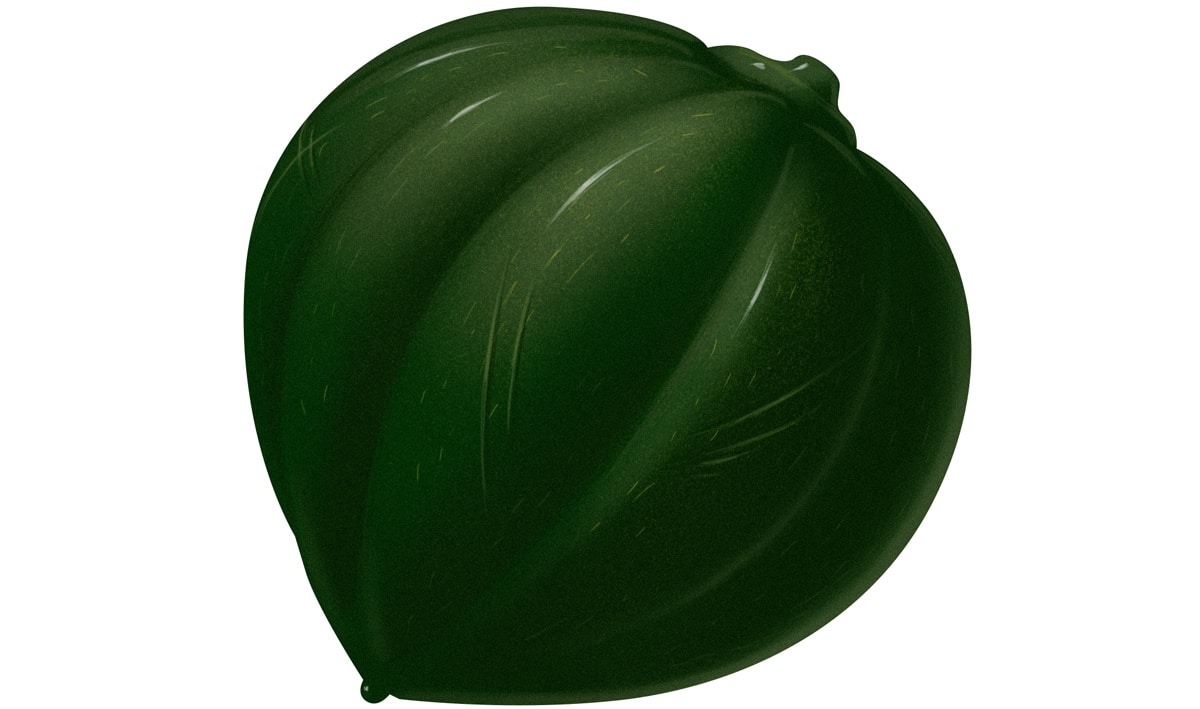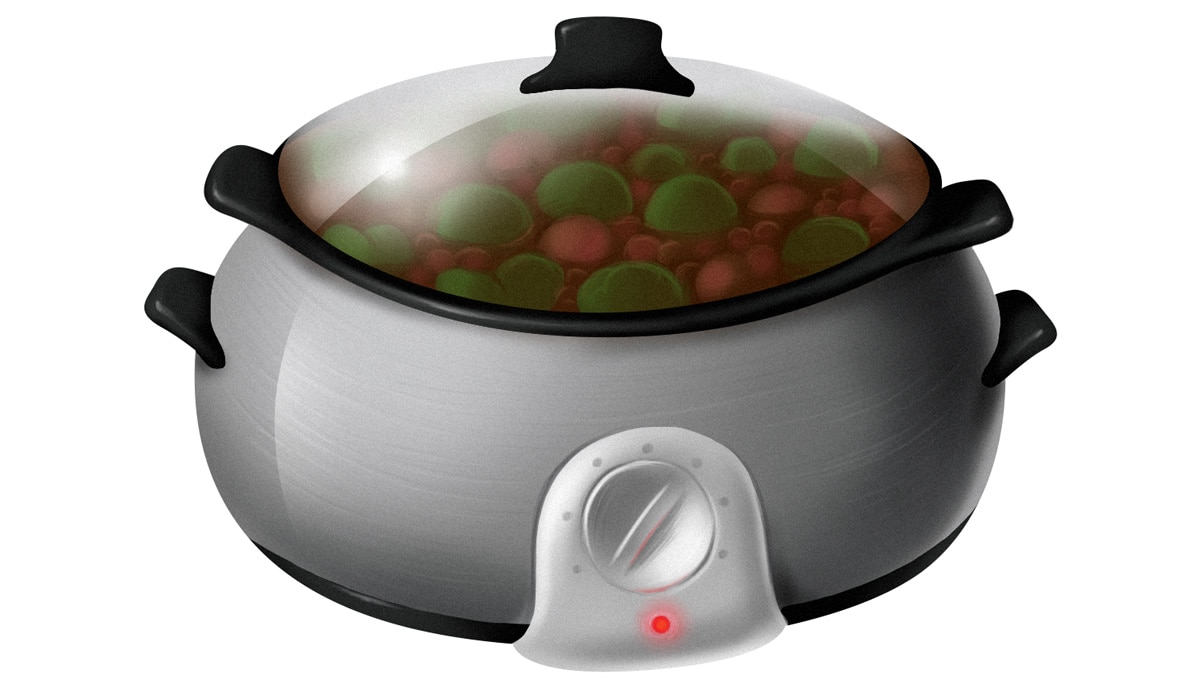It’s the season of a thousand delicious squashes at the farmer’s market and heaps of sweet potatoes everywhere you look. You can’t turn around without banging into a pile of pumpkins for your pie-making (or smoothie-making) pleasure. The sweet potatoes are overflowing their bin at the supermarket, and the parsnips are chilling in the display case just waiting for all your Halloween-themed jokes about how they're carrot ghosts.
But all this bounty can be a bit intimidating if you’ve never worked with it before. Everything is so root-y and bumpy and tough! It all takes so long! Here are 7 tips to make winter vegetables simple and non-intimidating.
1. Set up a good cutting environment.

This is important for cooking in general, but especially for tough squashes and hard roots. Nobody wants to spend half an hour whaling away at a pumpkin just to get it into chunks. That sucks, and it’s enough to put you off thick-skinned squash for good. So let’s avoid it!
Make sure you have a sharp knife. Everything in the kitchen is a thousand times slower, clumsier, and more frustrating with a dull knife, especially trying to work with thick-skinned produce. Plus, you’re actually more likely to cut yourself seriously. That’s because dull knives force you to apply more pressure - instead of just easily slicing through your food, you’re pushing and forcing the knife, which leads to more potential for it to slip and hit your finger.
No knife sharpener? No problem - many cooking stores offer knife sharpening free or for a small fee. Some farmers’ markets and grocery stores also have a booth where you can get your knives sharpened.
Also, lay a towel underneath your cutting board to prevent any slipping or sliding. Make sure you have enough space on the countertop and a comfortable height to work with (shorter folks may prefer to use a table, rather than the "real" countertop).
2. Microwave tough customers.
Another tip for cutting really tough squashes and roots: microwave for just a minute or two to soften up the skin before you cut. This can be a lifesaver for spaghetti squash in particular.
3. Deal with the Peel...later
Let's face it: not all vegetables are ideally shaped for peeling with a knife. Trying to hack the skin off a recalcitrant butternut can cause a lot of wasted squash, and sometimes a few bleeding fingers. Skip that part by choosing one of the below:
- Cut the vegetable (if necessary), THEN chop off the peel. No balancing a weirdly-shaped gourd on a cutting board while you try to finesse the rind off. Just cut your chosen vegetable until it’s easy to cut the rind off the pieces you have, then get rid of the peel, then finish chopping if necessary.
- Cook, then peel. If you’re boiling squash for a mash or soup or something similar, just cook it first, let it cool, and then take off the rind. If you’re roasting, you can roast halves of a spaghetti or acorn squash with the peel on and then just scoop out the insides or pull off the rind. Often it will just peel right off in your hand.
- Pick a vegetable where you can eat the peel. Beets, parsnips, and sweet potatoes don't need to be peeled at all. Delicata squash is a great example of a squash with totally edible rind.
- Incorporate the rind into the dish. For minimum peel-related effort, use roasted acorn or butternut squash halves as a “bowl” for chili or similar, so that the peel is actually part of the dish and you never have to worry about it at all! Try this pulled pork stuffed squash or apple and sausage stuffed squash!
4 Pre-cook to save prep time
Even if you don’t need any help to get through the skin, you can use the microwave or the stove to save cooking time for hardier vegetables without sacrificing the crispy, nicely browned finish that comes from roasting or frying.
For potatoes and sweet potatoes, two methods:
- Cut them to the size you want, throw them into a pot of boiling water, cook for 3-5 minutes (smaller pieces = shorter cooking time), and then take them out. Pour out the water, let the steam evaporate off, and throw your potatoes onto a greased baking sheet or into the frying pan to finish them off with a crunch.
- Before cutting the potatoes, nuke them in the microwave for 3 minutes on each side, until they’re a little bit softer but not soft enough. Then cut them and fry/bake as usual.
You can also use the microwave method with squash - then just throw them on the pan and roast as usual.
5. One simple recipe: Fat + veg + seasoning

There are many, many complicated squash recipes out there, and if you’re in the target market for one of them, you probably already know where to look. This one’s for the folks who just want dinner on the table. There are three ingredients:
- Fat. Fat makes vegetables absolutely delicious, and winter veg is no exception. If you don’t know which fat to use with a particular vegetable/spice combination, use refined coconut oil: it has almost no flavor, so it can’t clash with whatever else you have. Otherwise, try olive oil (great with savory/herbal seasonings), bacon fat (you can just cut up a slice of raw bacon onto the baking sheet or into the pan), or other healthy animal fats.
- Vegetables. This is whatever vegetable you’re cooking. Beets, turnips, carrots, parsnips, winter squash, etc.
- Seasoning. Salt is a bare minimum. If you like, go savory with rosemary and sage, or sweet with cinnamon or pumpkin pie spice. Or turn up the heat with chili powder or curry seasoning. It’s your recipe; you get what you want!
Pre-cook the vegetables if you’re going to do that; then chop if necessary, combine them with the fat and the seasoning and apply heat (in a pan on the stovetop OR a baking sheet in the oven, it doesn’t matter which.) Dinner is served!
This basic recipe can be modified with different fats and seasonings to create all different flavors, but it’s always easy.
6. Don’t pass by the freezer aisles!
Squash, beets, and other hardy vegetables are so sturdy that they hold up really well to being frozen and thawed. Even if you hate frozen spinach or green beans, give frozen winter veg a try! There’s a LOT you can do to a beetroot before it starts to break down, and freezing is definitely one of those things.
Frozen winter veg is generally peeled and cubed for you, which is extra convenient if you hate dealing with the hard rinds but also don’t want to eat them. For pre-cooked vegetables, just take them out of the package and throw them on a well-oiled baking sheet (make sure there’s enough cooking fat on the sheet). Roast until everything is nicely browned and warm all the way through.
For raw frozen vegetables, you can roast them directly from frozen, or just let them thaw and cook with them as you would normally.
7. Use a slow cooker to minimize cooking effort.

A slow-cooker is one of the best tools around for time-crunched Paleo cooks. If you don’t have time to sit around watching your pumpkins roast, try using a slow-cooker to add winter vegetables to any kind of soup, stew, or mash. If you don’t already have a recipe to follow, try…
- Slow-cooker squash soup
- Slow-cooker beef and rutabaga stew
- Squash and beef stew
- Slow-cooker butterkin and nuts
What’s your best tip?
What’s your best tip for easy winter vegetables? Got a fabulous no-fuss recipe for beets or turnips that everyone simply has to try? Let us know on Facebook or Twitter!





Leave a Reply